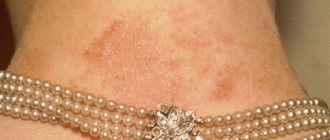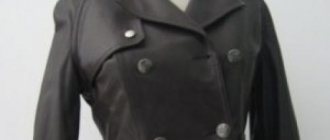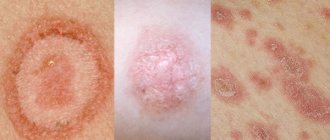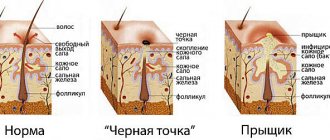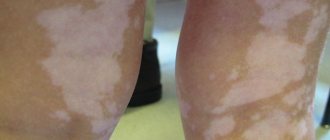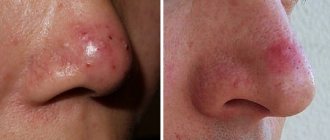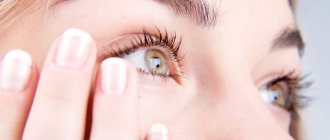Leave a request
A port wine stain or flaming nevus is a congenital vascular defect of the skin, which is a type of hemangioma. Port-wine stains on the face are a fairly rare benign formation that affects only about 8% of people on the planet. Moreover, this imperfection occurs equally in both men and women. From the name of the defect, it is clear that port-wine stains are specific and extremely unaesthetic formations on the face, causing complexes and discomfort in their owners. However, a port-wine stain requires treatment not only from the point of view of external skin imperfections, but also from a physiological point of view.
How to get rid of millet grass once and for all?
The main problem is that most people at the initial stage do not pay much attention to the appearance of milia. In the first stages, the rash does not cause much discomfort. Over time, millet lesions begin to develop and affect new areas of the skin. And then at one fine moment, your own reflection in the mirror ceases to please.
It is worth noting that depending on the degree of prevalence of millet lesions on the skin, removal methods may vary. The most popular method in the past was mechanical removal. In this case, the use of special tools is provided, thanks to which the tumor is removed along with the capsule. This method is often used for single rashes. The disadvantage of mechanical removal is that marks and small scars remain on the body after such a procedure.
Why are port-wine stains dangerous?
Appearing on a child’s skin from birth, a port-wine stain grows larger and larger every year. The progression of this disease entails many problems: increased saturation of the spot to red and purple shades, an increase in its area and even impaired visual function. Over time, the port-wine stain acquires a relief surface, often with the appearance of papules and nodules. As the body grows, the nodes on the spot are increasingly subject to mechanical stress, are easily injured, heal slowly and bleed. In addition, most patients with port-wine stains on the face experience severe emotional discomfort, especially during adolescence.
Advantages and features of ELOS removal of age spots
This procedure has a gentle effect on the skin and at the same time helps not only completely remove brown spots on the hands, face or body, but also improve the condition of the dermis. Its essence lies in the combination of two types of energy - light and electrical. When removing age spots on the face, selective heating occurs only in those cells in which there is an excessive concentration of melanin, followed by their destruction.
At the same time, surrounding structures are not subject to such effects. With ELOS correction of pigment spots on the hands and face, it is additionally possible to improve the condition of the skin. It gains elasticity and firmness, fine wrinkles also disappear, and its tone is evened out.
Among the main advantages of ELOS removal of age spots on the face are:
- safety;
- absence of complications and adverse reactions;
- instant and lasting results that last forever;
- high efficiency - pigment spots can be completely removed;
- effectiveness - in addition to discoloration of the defect, there is an improvement in the condition of the skin and a rejuvenation effect.
Treatment for Port Port Stain
When thinking about treating a port-wine stain, it is worth knowing that sometimes the presence of this benign formation indicates the presence of another disease. For this reason, it is extremely important to undergo a thorough diagnosis of the patient in the early stages of the development of this disease. People suffering from such an external defect as a port-wine stain often try to get rid of it on their own. Creams, scrubs, and chemical peels are used, which not only do not solve the problem, but also aggravate it even more. Some specialists remove heavily grown port-wine stains by excision, but recently doctors are increasingly using less traumatic, but no less effective methods for treating port-wine stains: laser therapy and cryodestruction with liquid nitrogen. However, it was only with the invention of phototherapy that the choice of treatment for port-wine stains became predetermined.
What are milia?
Wen are dense subcutaneous formations, represented by white or yellowish nodules, usually the size does not exceed 2-3 mm. They can appear on the skin as individual pimples or in small groups of several nodules. In most cases, whiteheads go away on their own due to changes in the epidermis, but it happens that they remain for a long time.
As a result of research by dermatologists, it was revealed that wen (retention cysts) are located in the skin separately from the hair follicles, sweat and sebaceous glands and their ducts. The cyst capsule contains layered, bulbous keratin aggregates (keratinized epithelial cells) rather than sebaceous gland secretions. Fat is sometimes mixed into the total mass, but in very small quantities.
Reasons for their appearance
Neither age nor gender play a fundamental role in the appearance of milia; they occur even in newborns. Nevertheless, experts have voiced a number of factors that lead to the appearance of retinal cysts:
- hyperkeratosis - excessively active cell division in the upper layer of the epidermis;
- genetic predisposition;
- frequent skin rashes;
- disturbance of the rate of metabolic processes;
- errors in the diet or an incorrectly composed diet with an abundance of refined sugars, salty or spicy foods;
- hormonal imbalance;
- incorrectly selected cosmetics for facial skin care;
- vitamin A deficiency in the body;
- disruption of the digestive tract, milia are often found in people with gastritis or stomach ulcers;
- excess ultraviolet radiation, wen are not uncommon among people who often visit solariums;
- skin damage - burn, inflammation or injury.
You may be interested in: Laser hair removal with alexandrite laser
Treatment of port-wine stains with phototherapy
Treatment of port-wine stains with phototherapy does not require special training from a person and takes little time. The IPL handle of the Lumenis M22 effectively removes wine stains from the face. The radiation of high-frequency IPL light is absorbed by chromophore cells - hemoglobin and melanin, while neighboring areas of the epithelium are not affected. Under thermal influence, chromophores are destroyed, and vascular formations on the face disappear. The number of phototherapy sessions required to completely remove port wine stains depends on each individual case. IPL M22 can handle small dyschromia in one session, but larger ones require repeating the procedure.
Laser removal of wine stains
At the First Children's Medical Center, a medical device based on a copper vapor laser is used for children. Laser skin treatment allows the patient to get rid of the defect in several sessions without pain and without damaging surrounding tissues. Selective laser photothermolysis for angiodysplasia is a procedure that has the maximum cosmetic effect! Removing wine stains with a laser is the best method today. The procedure is performed painlessly, quickly, without cosmetic defects, on an outpatient basis. After exposure to the laser, the spot gradually begins to fade and disappears completely. In the vast majority of cases, anesthesia is not required.
Why do they appear?
There are two types of whiteheads:
- Primary. They form on their own for no apparent reason.
- Secondary (or pseudomilium). They appear on the site of scars formed after injuries or inflammatory processes.
The exact causes of milia are not fully understood. It is known that the triggering factors that provoke their appearance are:
- Heredity. If one of the parents suffered from milia, the likelihood of their occurrence in children is also extremely high.
- Incorrect care. Each skin type needs different products. If daily care is not chosen correctly, the risk of not only milia and acne, but also premature skin aging increases.
- Hormonal disorders. According to statistics, whiteheads most often appear during pregnancy, in the postpartum and teenage periods, as well as in people over 40 years of age. At each of these stages, the level of sex hormones decreases, due to which rashes occur.
- Unbalanced diet. Poor nutrition is one of the main causes of dermatological problems. The likelihood of developing whiteheads increases significantly if the diet consists mainly of fatty, fried, smoked and sweet foods.
- Disturbances in the gastrointestinal tract. Diseases of the digestive system provoke the appearance of milia. The situation is aggravated if various pathologies of the thyroid gland are added to these ailments. It is precisely because of the immaturity of the gastrointestinal tract that whiteheads are observed in newborn children, but they go away on their own without any intervention.
Thus, in some cases, before removing milia, it is advisable to find out the cause of their formation and eliminate it. This is the only way to get rid of them forever.
Diagnosis and treatment of milia
To confirm the diagnosis of milia, no laboratory tests are required; a visual examination of the rash by a dermatologist is sufficient. After examining the skin and finding characteristic rashes represented by dense white or yellowish nodules, the doctor will make a diagnosis.
Often, dermatologists prescribe facial exfoliants containing urea or salicylic acid to patients in order to provoke spontaneous release of the cyst to the surface of the epidermis. However, in most cases, it is not possible to achieve a positive result with the help of these means due to their low effectiveness.
Ways to remove milia
Removing wen at home is prohibited, since the lack of necessary sterility can lead to re-infection of the skin and the appearance of acne, boils, carbuncles, etc. milia removal should only be done by a highly qualified specialist in a beauty salon or a dermatologist on an outpatient basis.
Today, there are three most common methods for removing milia:
- curettage is a procedure during which a cosmetologist makes a microscopic incision on the skin through which the wen is removed along with all its contents. The procedure is quite painful, so it is considered not particularly popular;
- electrocoagulation is a kind of surgical intervention during which a dermatologist (cosmetologist) first treats the skin with an antiseptic and then applies a constant or variable charge to the wen. This is how the milia are destroyed. Subsequently, a scab forms in its place: it consists of fragments of dead tissue. Electrocoagulation involves thermal, electrodynamic and physicochemical effects;
- Laser therapy is most appropriate for group rashes or deep milia. Laser therapy is carried out using innovative devices, in this case a carbon dioxide laser is most often used. It allows you to remove pathological areas layer by layer with high precision without damaging healthy tissue.
Preparation for laser therapy
There is no special preparation for the removal of wen, the only condition is to refrain from visiting the sauna, bathhouse and procedures that involve steaming the face 5-7 days in advance.
You may be interested in: Laser carbon peeling
Laser therapy has a number of advantages over other methods of removing fatty tissue:
- painlessness of the procedure;
- there is no chance of damaging healthy tissue;
- no risk of suppuration, since there are no open wounds;
- short rehabilitation period;
- short duration of manipulation – about 40 minutes;
- low probability of relapse.
After laser facial cleansing, you must avoid visiting the pool and using peeling for 4 weeks.
How to treat milia?
Milia do not have a hole on their surface, so they cannot be removed by simple squeezing. An attempt to squeeze out milia can lead to skin inflammation, redness and bruising.
In most cases, milia disappear on their own within 2-4 weeks. However, if milia continues to grow, we recommend visiting specialists at the ATLANTiK Laser Surgery Center, who can professionally remove milia with a laser.
- Laser removal of milia is carried out after skin anesthesia with lidocaine-based anesthetic cream.
- During the removal process, a laser beam is applied to the skin in the area of the apex of the miliary formation, then the keratin masses are removed, after which the bottom of the cyst is treated, which prevents the disease from returning in the future.
- Immediately after laser removal of milia, small dotted marks the size of an enlarged pore remain on the skin, which disappear without a trace within 10-14 days.
Cryotherapy
Another method for removing stains is cryotherapy. In this case, the affected tissues are exposed to ultra-low temperatures (liquid nitrogen). Frostbitten epidermal cells turn black and then are rejected, and healthy skin appears underneath.
It is worth noting that such a procedure is performed relatively rarely, since the effect may not be so noticeable, and small scars may form on the skin. In any case, you should never remove wine stains from the skin yourself - this can only aggravate the situation.
Port-wine stains on the skin: causes of appearance
It is immediately worth noting that the exact causes of the development of capillary angiodysplasia remain unknown today. Nevertheless, several factors can be identified, the impact of which increases the likelihood of the formation of port-wine stains on the skin of the fetus during fetal development. The list of them is not that long:
- Penetration of various toxins into the mother’s body (together with the blood, potentially dangerous substances enter the body of the developing fetus).
- Sharp fluctuations in hormonal levels in a woman’s body during pregnancy (in particular, changes in the level of estrogens and progestins).
- Exposure of a pregnant woman's body to dangerous radiation.
- Infectious diseases of the mother's genitourinary system during pregnancy.
